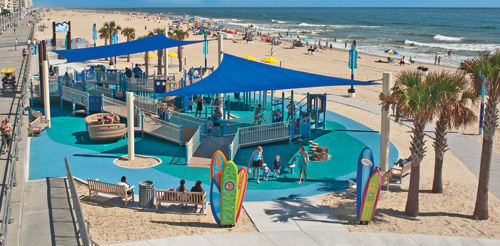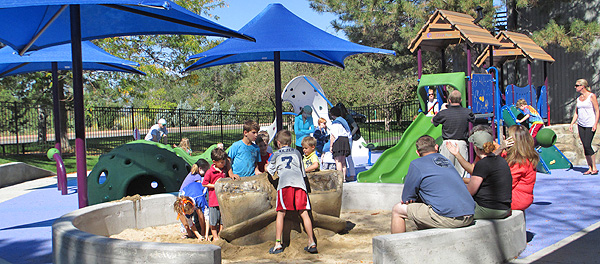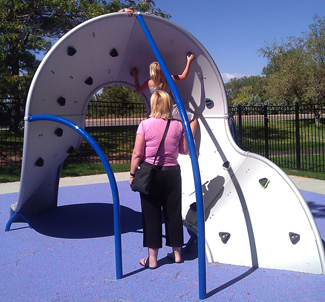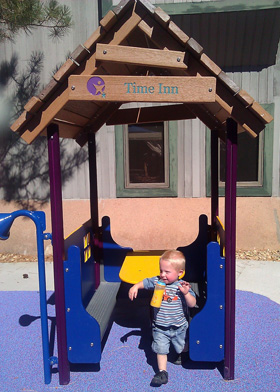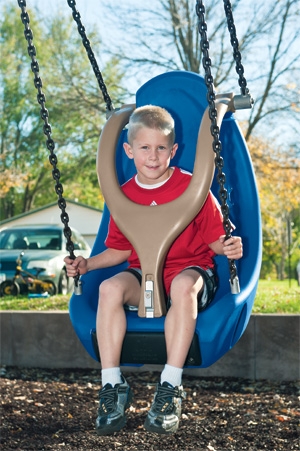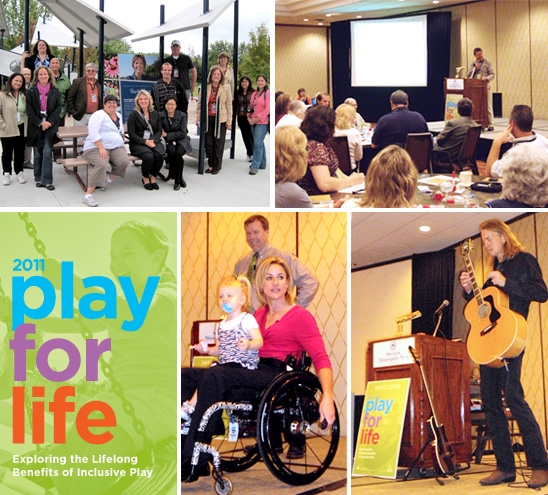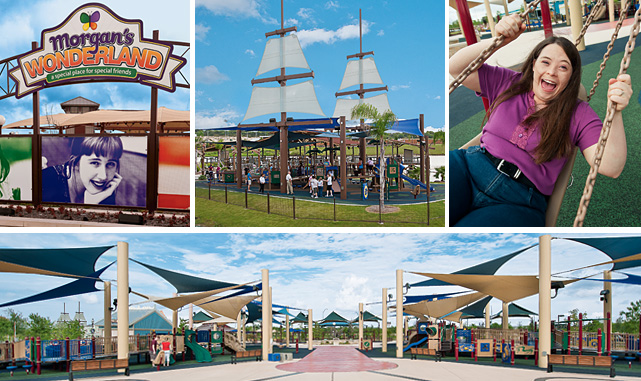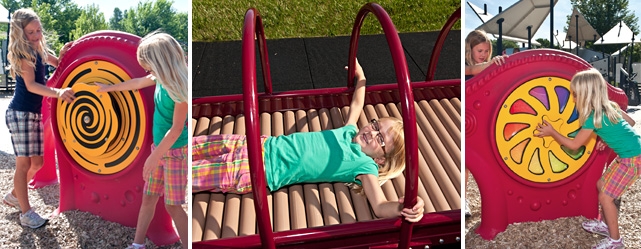This post comes to you from Marnie Norris, director of programs at Shane’s Inspiration. Earlier this month, she presented at the 2012 National Association for the Education of Young Children (NAEYC) Conference. Marnie’s session, titled Together, We Play! discussed how to use play-based techniques, including peer buddies, to integrate children with and without disabilities, support children with sensory and communication differences, and minimize conflict opportunities. Read below for ideas she shared as well as took away from the discussion.

At a major conference with thousands of attendees and a wide variety of sessions to choose from, you always wonder how needed your information is…how much is social inclusion on the minds of early childhood educators?
As the room filled up two weeks ago in Atlanta, it was clear that teachers, principals, and professionals need tools to support the social interaction between students with and without disabilities…interaction that can happen spontaneously in early childhood but not always consistently.

Here are few tips and tools that we shared with each other during our workshop:
1. Start ability awareness early…in Kindergarten, a book and guided discussion, followed up by consistent interaction through play, is enough (We Can Do It! By Laura Dwight, Susan Laughs by Jeanne Willis). At that age, we focus on the fact that everyone has a hard to and a can do. For some, the hard to may be walking or for others talking. Help the students to connect their can dos and hard tos! Together, we can do.
2. Turning the challenge into the tool…if you have a student unable to connect through play find out what he/she is focusing on (ex: my student does nothing but spin the wheels on the train…find a peer who loves playing with trains. Let the peer hold the train while his buddy spins the wheels as a start. Give them time away from the group and excess stimuli to explore trains together.)
3. Flexibility in group activities…if you have a student interested in but unable to interact with the group, isolate one or two of her peers and let them play as a small group. Once the connection is made with a smaller number of children consistently, she may be more drawn in to circle time/group play.
4. Grouping the students…if you have a few students with disabilities in your classroom, create play groups consisting of two or three students with typical abilities and a student with disabilities. Give the groups identities: Bears, Penguins, Butterflies. Let them use the playground or indoor space as a group to encourage social interaction in smaller numbers.
5. Sensory stimulation…many teachers spoke about students having tantrums/outbursts because of being over stimulated. Find out what your student’s sensory profile is: is he triggered by sound (if so, is it specific or the wall of noise), touch (too much light touch, too little deep pressure on their bodies), light/color, etc. If you can, have Mom and Dad share what triggers him at home. Then you can modify his environment to support the sensory needs: some students are under-sensitive to touch and need bigger movements, deeper hugs or weighted jackets to help them register the sensation.

Most importantly…keep trying! Creating awareness and understanding in students (and adults) as to how our peers who have differences communicate, feel and socialize will help everyone. Combine consistent play with that awareness and you have a powerful foundation for social bridges!


